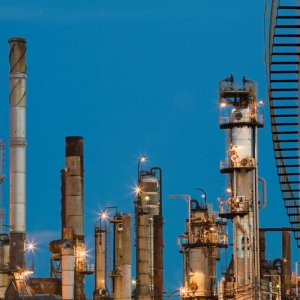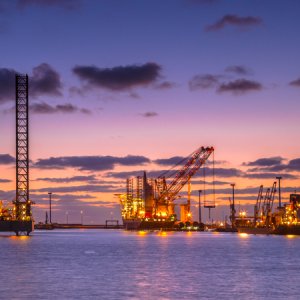Providing Mexico's Gas Security

STORY INLINE POST
Q: What steps must CENAGAS take to move forward and what are its top priorities?
A: We have been operating since August 2014 and have grown to over 350 employees, with a focus on recruiting young talent. We remained profitable in our first two years of operation, providing a dividend to the federal government while maintaining our own capitalization of around MX$1.7 billion. We want to build a strong balance sheet that will enable us to raise investments in proportion to our income and to have a solid portfolio of assets. On the operational side, we have already signed four contracts under the new regulatory framework and we are about to sign another for pipeline operation and maintenance that will come into effect in 2018.
We are also on our way to maturity as a TSO through contract renewals, maintaining our contract-signing pace and being involved in the first tender for storage capacity this year. The natural gas industry has progressed in transportation since molecule prices were deregulated and this has incentivized operations. We still have challenges ahead, such as reaching our strategic objectives and growing to become even more independent of PEMEX. We also need to finish our information and operational technology projects, but we believe we are on the right track moving forward.
Q: How do you maintain a positive balance sheet and what are the main challenges you perceive in the market?
A: Our ultimate objective is to provide gas security to the country and we are well under way. We are aware that private companies will eventually earn larger shares of the market so we need to carry out the projects we deem necessary, with an eye to budget control and cost-reduction practices. A few years back, critical alerts on natural gas supply were the main concern due to the lack of infrastructure growth, which changed after the implementation of the Los Ramones pipeline project. Now, challenges are related to the drop in local production that lead to more natural gas imports as we are reaching our import-capacity limit.
On the positive side, there are many pipelines being built right now and they are close to starting commercial operations. Once this happens, we will enter an era of larger transportation capacity than demand, which will be good for gas security but financially challenging for transportation companies. We are aware that the best way to cope with these challenges is to raise the availability of natural gas so more consumers are connected to the pipeline.
Q: What factors contribute to a positive supply-demand balance and where do your main customers come from?
A: The first thing that must be done is to boost demand for natural gas and power generation capacity in Mexico. The local price of natural gas has fallen in comparison to other fuels, mainly driven by international prices, which has made it more desirable to connect to the pipeline. There are still many auxiliary costs and this remains a challenge. When it comes to our customer breakdown, 40 percent comes from power generation, 20 percent from the oil and gas industry and 40 percent comes from industrials and local distribution companies, which has traditionally grown more slowly but it is in a better position now thanks to regulations from CRE. CENAGAS has always been a customer-oriented institution and we value their satisfaction over any other thing. We want clients to have the best quality standards and good consumption systems.
Q: What trends will reshape your contract-signing capacity under the new market conditions? A: We see three major trends in related to contracts moving forward. First, larger participation to maintain the same amount of capacity and increase our contract base substantially. Second, we also foresee a larger number of market-based contracts for maintenance and field operations, which we expect to grow to 40-50 percent of our total pipelines over the coming years. The third trend is longer term firm-based capacity contracts. Despite the construction of more pipelines that could bring new opportunities for our clients, we are signing longer contracts with them. We plan to build long-term relationships with our clients and we are eager to keep moving in that direction.
Q: How will these market-based contract schemes transform your relationship with PEMEX?
A: The initial maintenance and field operations contracts were signed using previously-established prices with PEMEX based on its needs and costs. During 2017, we tendered four contracts under the new market conditions and we received substantial participation from the market and better economic terms. Two of these contracts were awarded to PEMEX and the other two to private companies. However, I believe PEMEX will lose interest in this type of business as time goes by.
Q: How does CENAGAS meet the demand for natural gas in the ZEEs?
A: First, we assess the number of potential customers in the ZEEs to understand their marketability. These zones will have gas availability as a public policy objective. We started with the ZEE in Guerrero-Michoacan and we are working on the engineering side of the project for a new compressor station. This will increase gas availability along the shores of these states for the companies that will require more natural gas for their industrial processes. This is an illustrative case of what we will do in the ZEEs to secure or increase the availability of gas in these zones and reach end consumers.
Q: What are your prospects for storage capacity and when will you tender new projects in this segment?
A: We have received a mandate from the Ministry of Energy to build 45Bcf of strategic storage capacity by 2026 to face potential setbacks for gas in Mexico. The ministry already set a target to tender the construction of 10Bcf of storage capacity by the end of this year, which is challenging. We have identified four different fields whose information will be available in CNIH’s data room for interested companies to nominate the best project. These nominations will provide us with feedback to assess what project to tender. We believe that many companies carrying out gas storage could be interested in this process, particularly companies in the US and Canada that have longer experience in this type of activity. We will publicize this project so companies can look at it and express their interest before the end of 2018.
Q: What would you like to achieve by the end of 2018 and in the coming years? A: By 2025, as a transportation company, we want to be among the Top 25 percentile of companies in safety, reliability and profitability. As a TSO, we want to stand out as an international reference for how things should be done following best international practices. Before 2020, we want to have a system where final users get open access to gas and feel that they are receiving modern standards when they acquire gas transportation services. By the end of 2018, we want to have the best renewal contract process and increase import capacity on the Mexico-US border, increase gas availability to Mexico’s southern states, revamp our gas compression plant in Cempoala, and start the tender for a new gas compression plant in Michoacan.
























